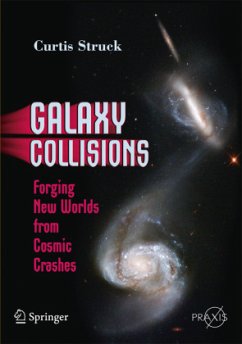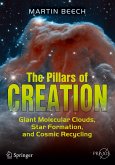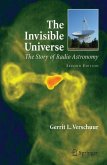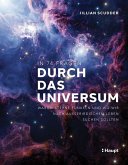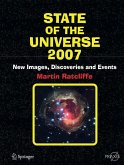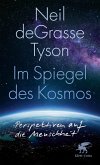The spectacular images of galaxy collisions capture the imagination. This book will show what is out there in the universe, what it's like in other galaxies, what they might look like, and how cosmic processes might affect life in other solar systems. It will explain crucial stages in the development of physical structure in the universe, and the effect of galaxy scale processes. Professor Struck will explore all the issues surrounding galaxy collisions. He will begin with a brief broad review of the background on galaxies, the history of their discovery, and how this has been driven by steadily improving technology. Chapters 2 gives details of the early stages of different types of galaxy collision - Rings of Fire, Tidal Swings and Retrograde and Sideways Reels - while Chapter 3 describes collisions between galaxies of very different masses: minor merger or dwarf destruction. Chapter 4 covers ultra-luminous infrared galaxies and major mergers and Chapter 5 briefly examines the techniques used for computer simulation results and how increasing computer capacity has affected the development of this field. The following chapter looks at understanding the physical processes of triggered star formation and nuclear activity. Chapters 7-9 look at the broader view of cosmological structure growth which determines the environment and conditions in which galaxy collisions occur. In the densest environments, this process repeats itself on the larger scale of galaxy clusters. The concluding chapter considers what a galaxy collision looks like from a solar system like ours. Although the galaxy is completely restructured and the night sky view would change greatly over the course of several hundred million years, the direct effects on our planet would be few and infrequent, with only a small probability of being truly catastrophic. These issues will be explored along with the ideas that galaxies must reach a certain evolutionary "maturity" before they can even form solarsystems, and that there are habitable zones within galaxies. Thus, galaxy scale processes, like collisions, can determine the fate of life on Earth-like planets.
From the reviews:
"Galaxy Collisions is big book, not physically but conceptually. ... Colour images, some appropriately from the Hubble Space Telescope, and diagrams support the text where needed throughout. ... it is refreshing to read a book that stays strictly on topic. ... Where an explanation is required to ensure understanding it is given quickly then attention is swiftly refocused back to the main subject. ... reader who has a good understanding of the key concepts of Astronomy will get a lot from this book ... ." (Paul Rumsby, Best Astronomy Books, August, 2011)
"This latest book in Springer's Popular Astronomy series tackles the phenomenon of galaxy collisions. ... the author keeps his descriptions qualitative and masterfully so, meaning the book will also appeal if you're an advanced amateur. With an emphasis on the historical development of the field and some colourful analogies, Struck has managed to produce an entertaining and comprehensive book about this important aspect of modern astronomy." (Alastair Gunn, Sky at Night Magazine, October, 2011)
"The book, profusely illustrated with many color photographs, is intended for professional scientists, as it quotes and discusses research papers by those active in the field. ... This will likely be a valuable resource for scholars currently conducting research in this area. Summing Up: Recommended. Researchers/faculty and professionals." (A. R. Upgren, Choice, Vol. 49 (2), October, 2011)
"The book is clearly a labour of love by author Curtis Struck, a long-time researcher into galaxy collisions, who attempts to put across his fascination with these events to a wider readership. ... it provides the opportunity to showcase the many wonderful images (from HST and elsewhere) of interacting systems." (Steve Phillipps, The Observatory, Vol. 131 (1225), December, 2011)
"Galaxy Collisions is big book, not physically but conceptually. ... Colour images, some appropriately from the Hubble Space Telescope, and diagrams support the text where needed throughout. ... it is refreshing to read a book that stays strictly on topic. ... Where an explanation is required to ensure understanding it is given quickly then attention is swiftly refocused back to the main subject. ... reader who has a good understanding of the key concepts of Astronomy will get a lot from this book ... ." (Paul Rumsby, Best Astronomy Books, August, 2011)
"This latest book in Springer's Popular Astronomy series tackles the phenomenon of galaxy collisions. ... the author keeps his descriptions qualitative and masterfully so, meaning the book will also appeal if you're an advanced amateur. With an emphasis on the historical development of the field and some colourful analogies, Struck has managed to produce an entertaining and comprehensive book about this important aspect of modern astronomy." (Alastair Gunn, Sky at Night Magazine, October, 2011)
"The book, profusely illustrated with many color photographs, is intended for professional scientists, as it quotes and discusses research papers by those active in the field. ... This will likely be a valuable resource for scholars currently conducting research in this area. Summing Up: Recommended. Researchers/faculty and professionals." (A. R. Upgren, Choice, Vol. 49 (2), October, 2011)
"The book is clearly a labour of love by author Curtis Struck, a long-time researcher into galaxy collisions, who attempts to put across his fascination with these events to a wider readership. ... it provides the opportunity to showcase the many wonderful images (from HST and elsewhere) of interacting systems." (Steve Phillipps, The Observatory, Vol. 131 (1225), December, 2011)

